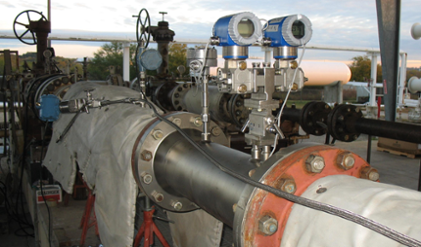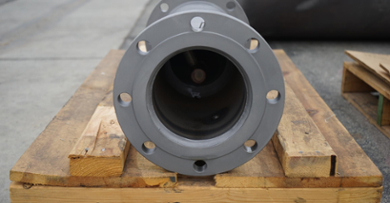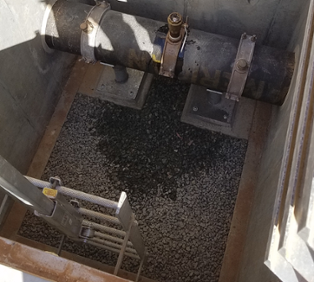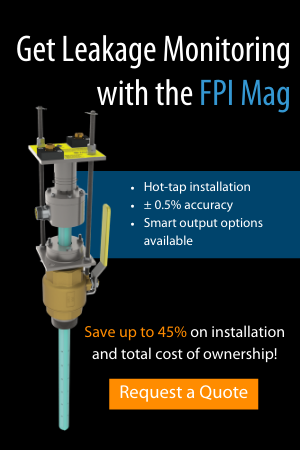Slurry Flow Measurement: Application Challenges and Project Considerations
What is a Slurry?
A slurry is a flow media composed of water or another liquid and suspended solids often with a high viscosity. Slurries as a measured flow media can be found in industries such as oil and gas, water and wastewater, mining, food and beverage, and more.
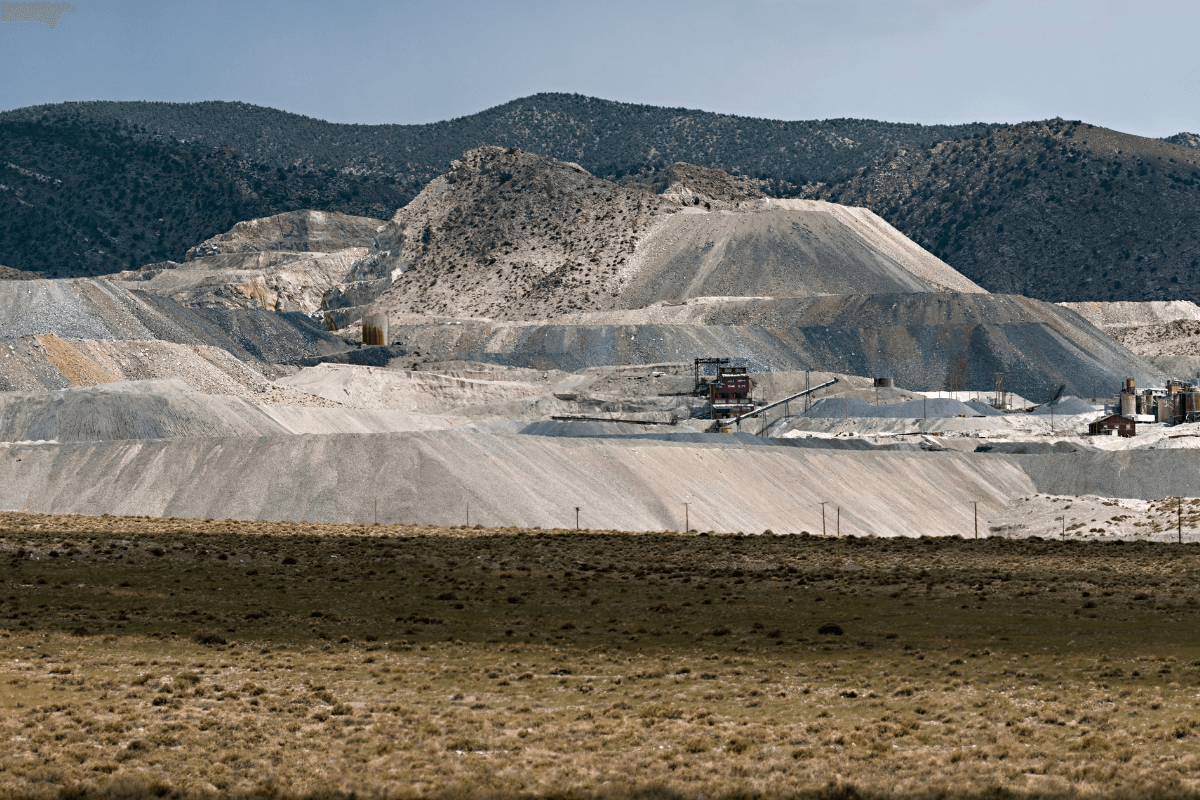
A tailings application at a mine flowing slurry into a reservoir or pond.
Types of Slurries
Slurries can contain a myriad of chemicals, solids, organic materials, and more – but not all slurries are measurable with a flow meter. Slurries contain solids that exceed 10% but may not surpass 50 – 60% in order to be measurable by a flow meter such as an electromagnetic (mag) meter. While all slurries contain some amount of solids, different slurries can exhibit various flow patterns and exhibit different behavior.
- Sand and Water Slurry. This type of slurry is often found in the mining, metals, and minerals industry in applications such as tailings and leachate. Sand particles are abrasive and can erode the pipeline and flow meter components.
- Talcum Powder and Water Slurry. Talc, lime, gypsum, and other small-particle size slurries vary in PH level, viscosity, and usage. In municipal settings, lime slurries can be used as chemical coagulants in aeration tanks or treat wastewater. In industrial settings, gypsum slurries can be used to absorb gasses in thermal power plant applications, for example.
- Pulp Stock Slurry. Pulp stock, a heavy fiber-based material such as textile fibers, don’t erode as much as the above slurries, but will nonetheless create significant noise. Pulp stock may often contain wood chips, chemicals, and other debris, and when added to a digester, white or black liquor (spent cooking solution) may also be added, creating a harsh flow media.
What are the Challenges of Metering Slurry Flows?
Composition and Velocity. Slurry flows can exhibit different behaviors; some slurries have liquids and solid particles moving at the same velocity and others exhibit dissimilar velocities. This laminar or turbulent flow can also be affected by flow disturbances such as elbows and valves. At high enough velocities, slurry flows can cause erosion as well as significant noise, a challenge for flow measurement devices. With abrasive slurries, it’s usually recommended to run a slurry flow at a velocity of 3 – 10ft/s, with non-abrasive slurries running 5 – 15ft/s.
Available Metering Technologies. Depending upon the viscosity and level of large particle solids in the flow, a variety of flow technologies are available. McCrometer’s V-Cone® may be applied to some slurries, especially those with soft solids such as animal fat, jelly, and other low-viscosity flow media. The V-Cone’s customizable materials, end connections, and taps make it an accurate, long-term solution for many industrial and oil and gas customers. However, the V-Cone does require a Reynolds number high enough to produce an accurate reading, and due to the obvious obstruction in the flow, the line should be purged often to prevent build-up.
For many harsh, caustic slurry flows, the best-suited flow meter is the mag meter, which contains no moving parts, and in McCrometer’s case, a fusion-bonded epoxy guaranteed against delamination and extremely resistant to abrasion. The Ultra Mag® is a full-bore mag meter option available in a range of nominal pipe sizes from 2” (50.8mm) to 48” (1219.2mm). Slurries rushing past electrodes in the line can cause significant noise and cause erratic measurement. The ProComm™ and ProComm Go™ mag meter electronics contain algorithms and signal conditioning to attenuate the noise in these applications, ensuring repeatable measurements and longevity in slurry applications. Both converters (also referred to as transmitters) have high signal-to-noise ratios which improve performance during these conditions.
Coriolis and ultrasonic meters have had some success in slurry flow applications. Highly viscous flows can be measured well by a Coriolis mass flow meter, as a dynamic slurry flow with viscosity and density variances don’t affect accuracy. However, the price point of a Coriolis meter can affect a plant’s operating budget, especially when highly corrosive slurries wear down the meter causing frequent maintenance or replacement. The ultrasonic’s non-invasive clamp-on style is often desirable in a caustic or corrosive pipeline, and also does not create additional pressure loss in the system. However, depending upon the type of slurry, its viscosity, and overall composition, the ultrasonic’s applicability is limited. Additionally, the clamp-on style of ultrasonic requires high-quality pipe conditions to produce an accurate reading – meaning, no rust or external pipeline build-up.
Noise and Grounding. Due to noise that slurries present in these applications, it’s necessary to implement grounding techniques to ensure signal integrity in mag meter operation. A modified grounding ring with the edge folded over and inserted into the mag tube to cover the liner edge will help prevent wear and extend the life of the meter body.
Top Considerations for Slurry Flow Measurement
Depending upon the type of slurry and the flow conditions, certain considerations should be factored into deciding what flow meter is right for the application.
- Meter Orientation and Mounting. If the process had been shut down, sediment can build up due to the particulates in slurries, covering electrodes or affecting measurement integrity. To improve your application’s success as much as possible, it’s often recommended to install the meter on a vertical rise flowing media upwards to prevent settling of solids and to confirm a full tube.
- Account for Velocity. Slurry applications are measuring media that will eventually wear out the meter. Even for flow meters boasting durability and longevity, the meter will not last as long as it would in clean water applications. To extend the life of a slurry meter, lessen the velocity. If the process pipeline doesn’t have a control valve off the pump, a transfer pipe, open channel, or similar, increase the size of the meter in order to maintain velocity control, lessen electrode erosion, and obtain an accurate meter reading.
- Repeatability. Installing a meter that attenuates noise and ensures signal integrity is key to obtaining an accurate, repeatable slurry measurement. Even when accuracy begins to lessen as the meter experiences wear and tear, that repeatability is key for operators and engineers utilizing the flow data in everyday process management.
- Conductivity. When evaluating a mag meter for slurry applications, consider the conductivity of the media. The Ultra Mag can operate at a conductivity as low as 5µS/cm (micro-Siemens/cm), but the noise created by a slurry flow can possibly surpass the measurement voltage if the conductivity is too low. Most mag meters require a minimum conductivity of 50µS/cm in order to obtain an accurate flow reading in slurry applications. If a high enough conductivity cannot be achieved, another flow technology, such as the Coriolis, may be necessary.
Tough Applications Require Expertise and Specialized Solutions
For tough slurry applications, it’s always recommended to consult the manufacturer. Working with our flow experts on staff allows us to understand application specifics, your project goals, and help us prescribe a fitting measurement solution that will deliver the results you’d like to achieve.
For information on our full suite of flow metering solutions, or to request a quote on your next flow project, visit www.mccrometer.com or contact the factory directly.
Related Posts
Featured Posts
3 Reasons Why Budget-Focused Farmers Invest in Integrated Telemetry
Allocating budget to flow technology may seem unjustifiable when funds are tight; flow meters and their electronics may already be installed, giving no reason to replace or add additional units when the current solution is in fine working condition. However, flow...
Small Package, Big Impact: The Importance of Desiccant Cartridge Maintenance
You’ve likely seen a desiccant cartridge, in the form of the small silica gel packet accompanying food products, or the activated carbon packet at the top of pharmaceutical bottles. It’s also commonly used in electronics and near sensors, especially for...
Meeting BABA Compliance and Expanding Opportunities
Content Recorded and Published at WEFTEC in October 2024 In this episode of The Water Online Show: On Location, (now former) McCrometer President Pete Oveson dives into the company's story and recent developments shaping its future. He begins with an overview of...
Request More Information

